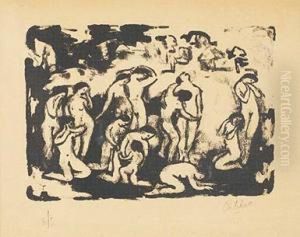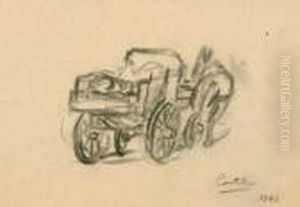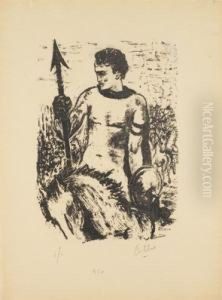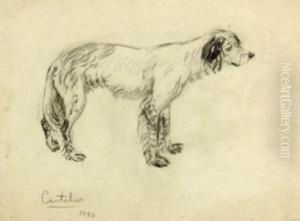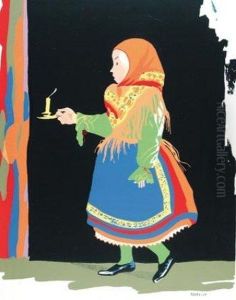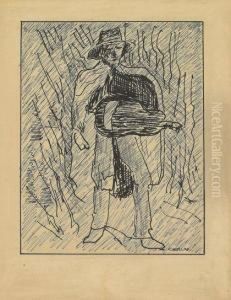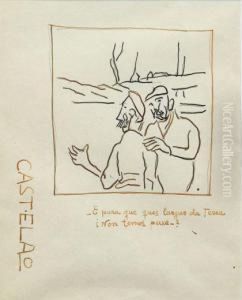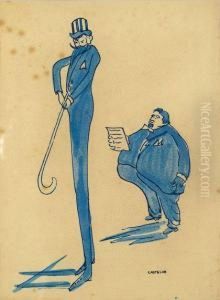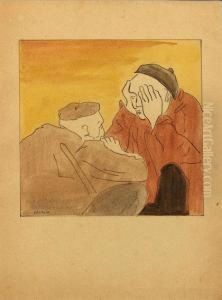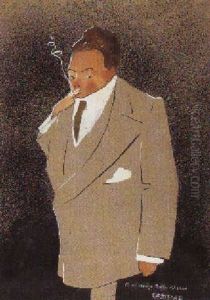Alfonso Rodriguez Castelao Paintings
Alfonso Daniel Rodríguez Castelao, commonly known as Castelao, was a prominent Galician artist, writer, and politician born on January 30, 1886, in Rianxo, Spain, and died on January 7, 1950, in Buenos Aires, Argentina. Castelao is often considered one of the foremost figures in Galician culture, and his work has played a key role in defining Galician identity and culture in the 20th century.
Castelao initially trained as a doctor but is best known for his artistic pursuits, including drawing, painting, and caricature. His works often reflected socio-political commentary, characterized by a style that combined both realism and expressionism. His illustrations and cartoons were widely published in magazines and newspapers, where he addressed issues such as social injustice, anti-war sentiments, and the defense of Galician culture.
Aside from his artistic endeavors, Castelao was deeply involved in politics. He was a staunch advocate for Galician nationalism and played a significant role in the Galicianist movement. In 1931, he was elected as a deputy to the Spanish Cortes for the Partido Galeguista, a Galician nationalist party, and later was heavily involved with the Galician emigrant community in Buenos Aires after the Spanish Civil War.
During the Spanish Civil War (1936-1939), Castelao supported the Republican side and found himself in exile following the Nationalist victory. He settled in Argentina, where he continued to work for the Galician cause, creating some of his most significant literary and artistic works, including 'Sempre en Galiza' (Always in Galicia), which is considered one of the seminal works of Galician literature.
Castelao's legacy is multifaceted; he is remembered as a key figure in Galician literature and art, a political thinker, and a symbol of the fight for Galician autonomy. His works are celebrated for their poignant social critique and deep connection to Galician culture and heritage. Today, he is honored in Galicia with museums and cultural institutions that bear his name, preserving his contributions to Galician culture and history.
